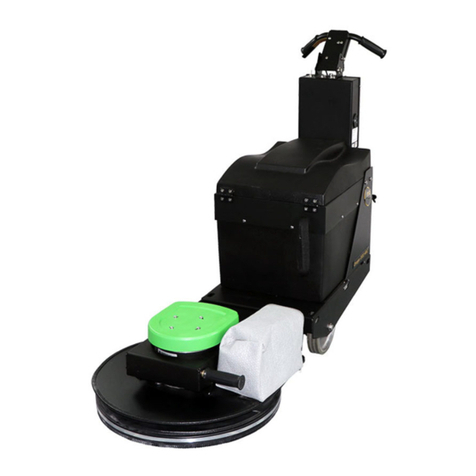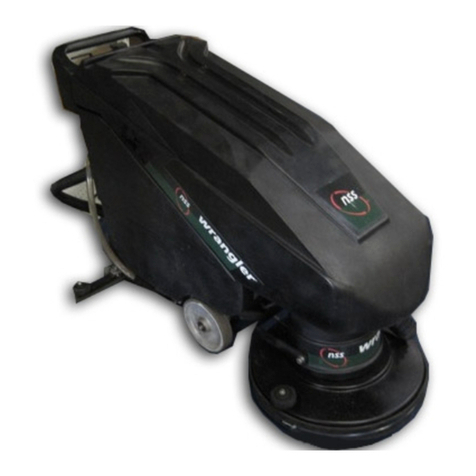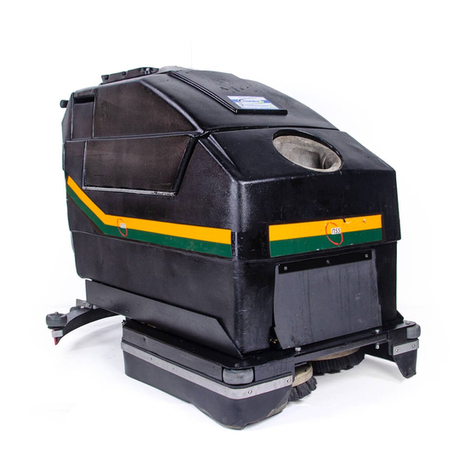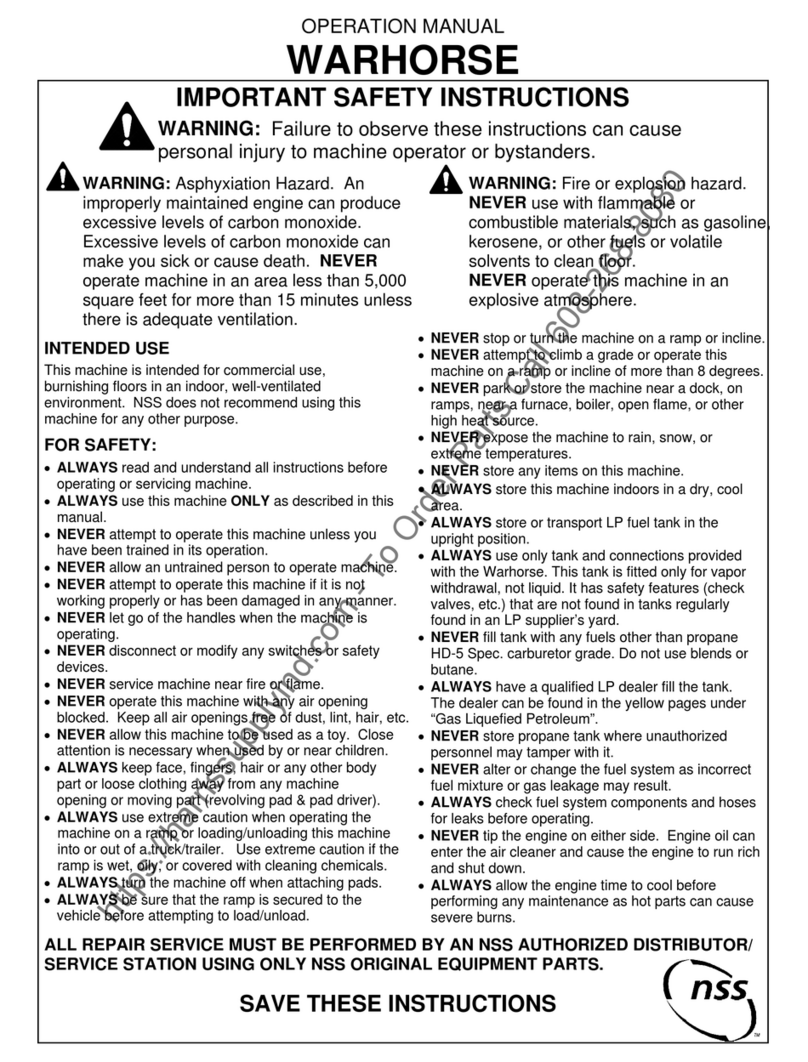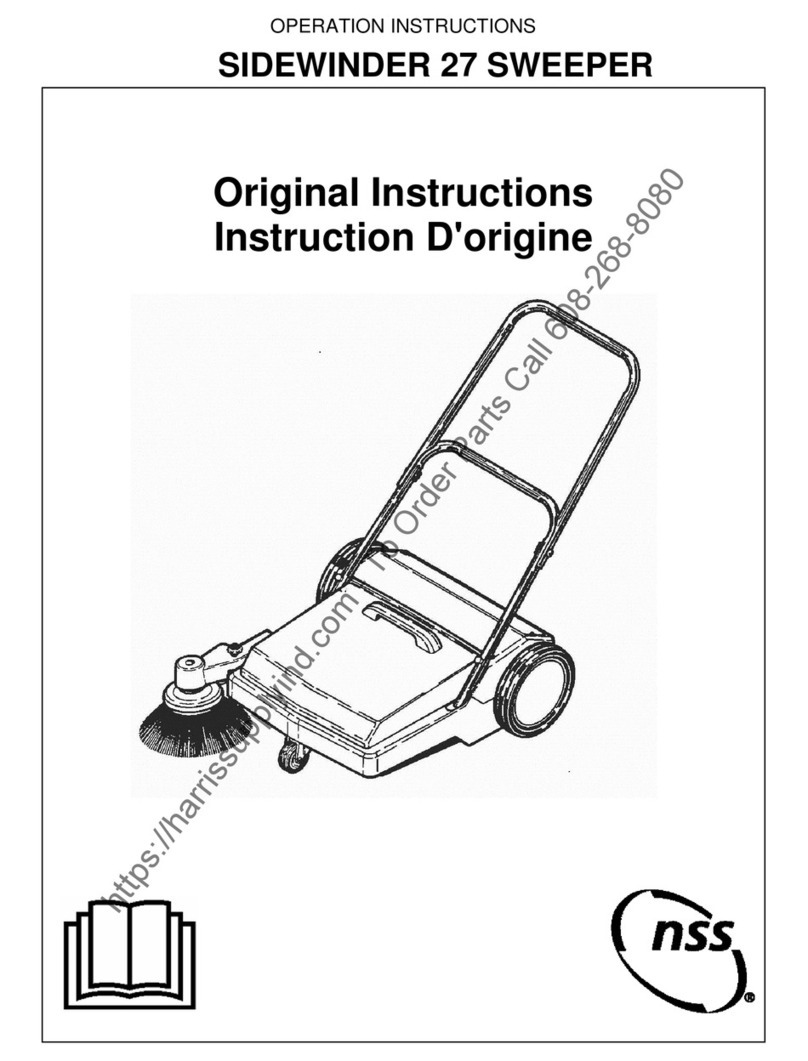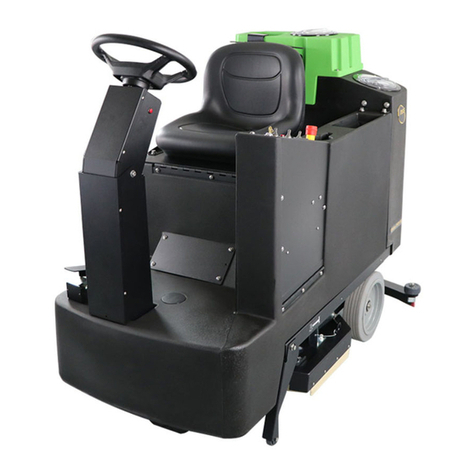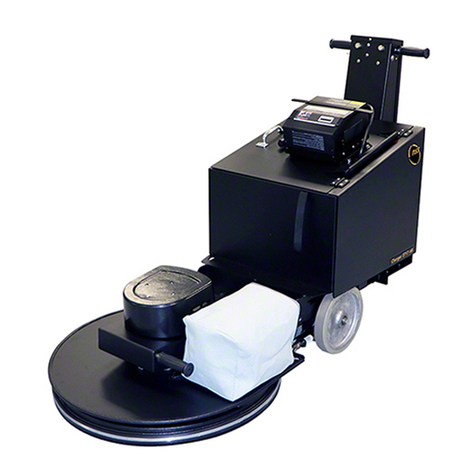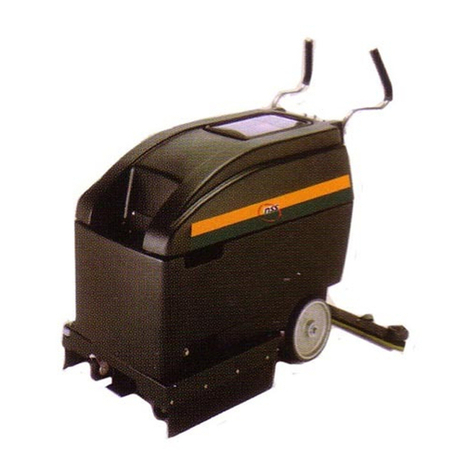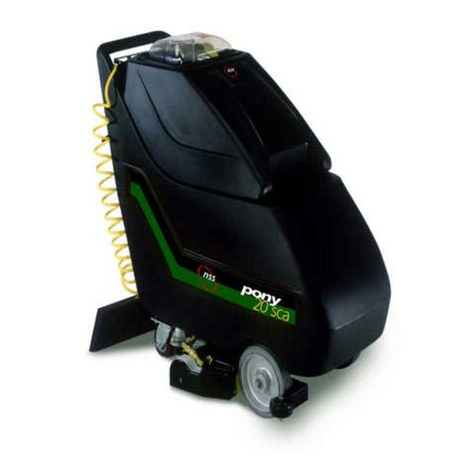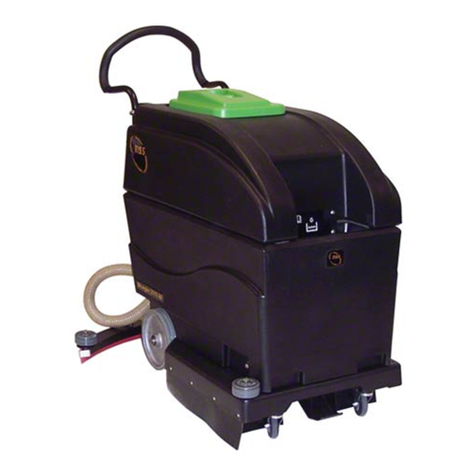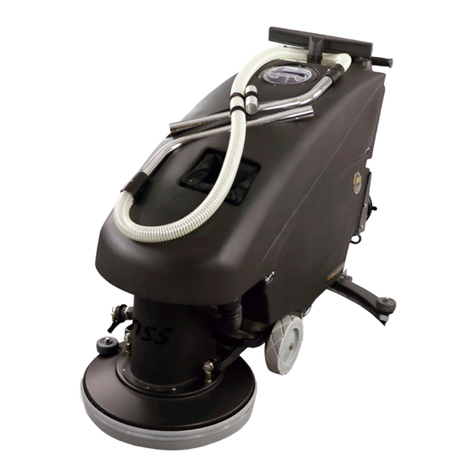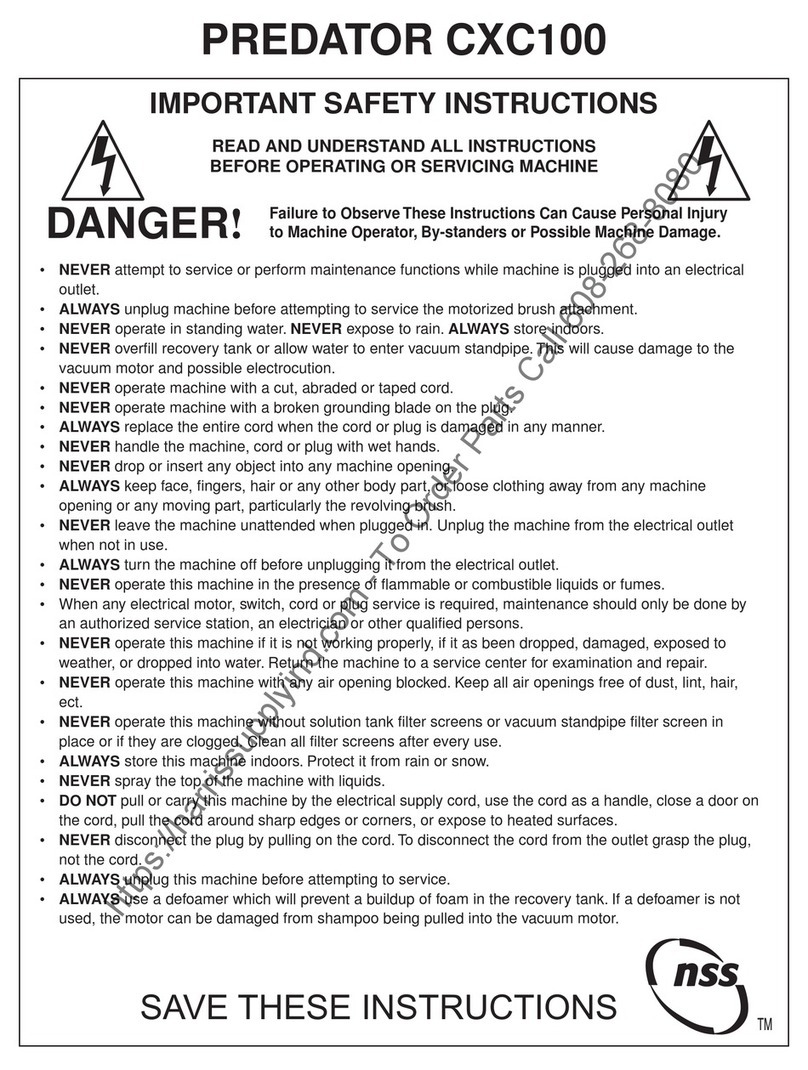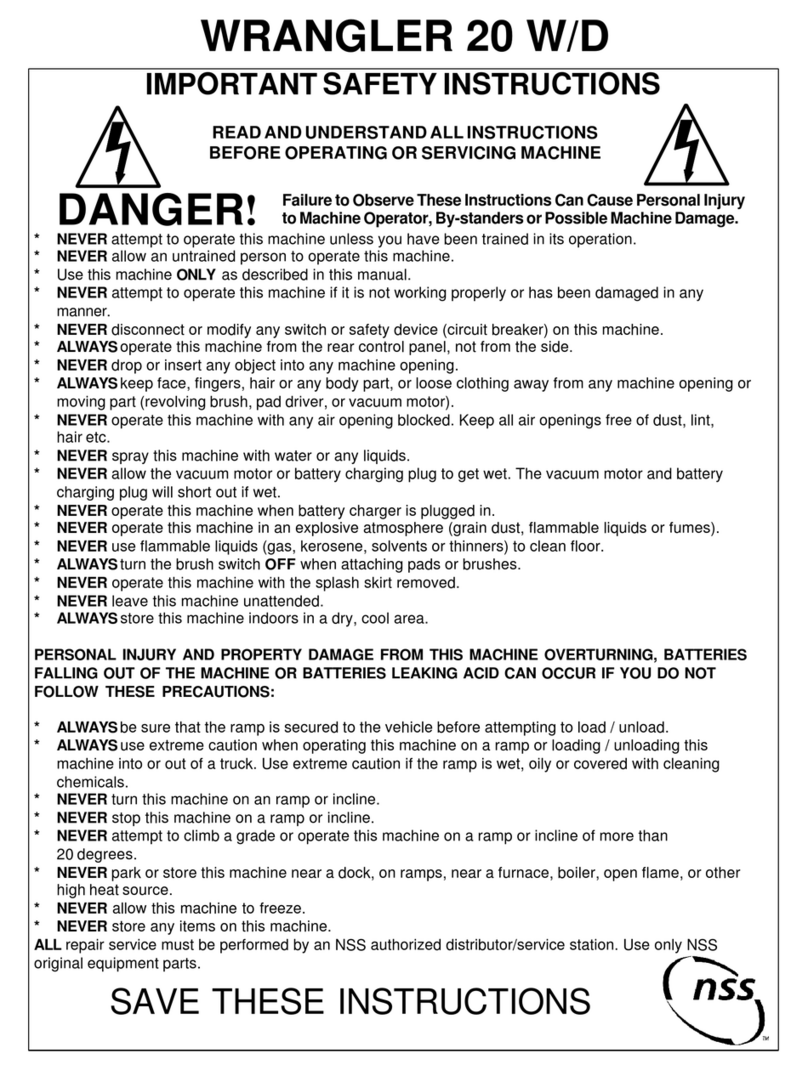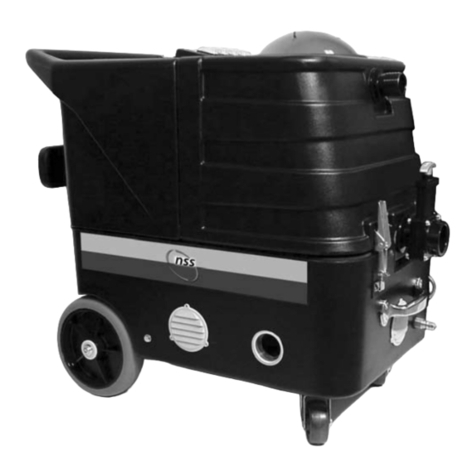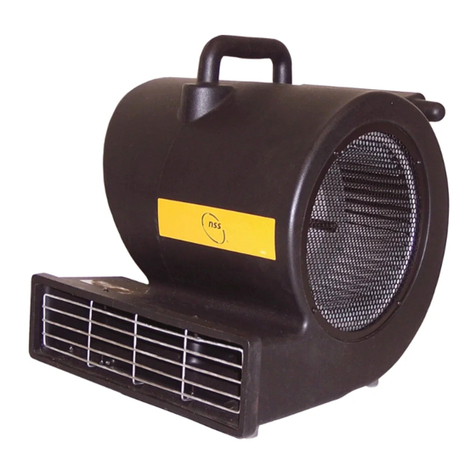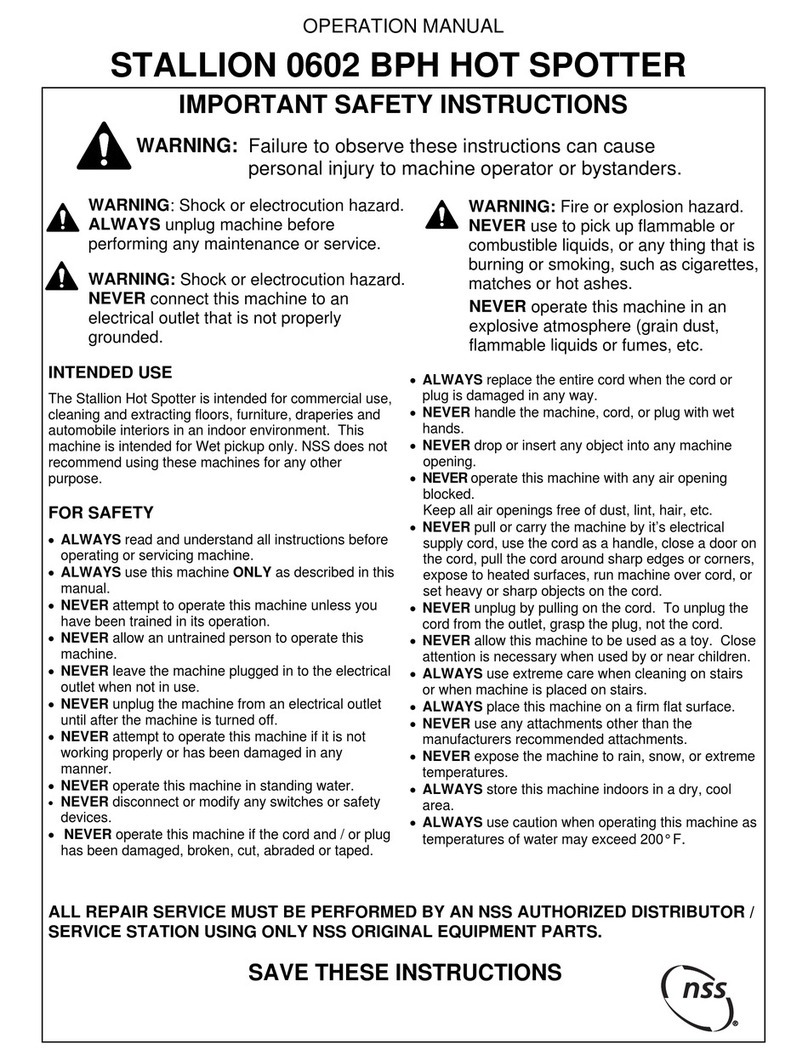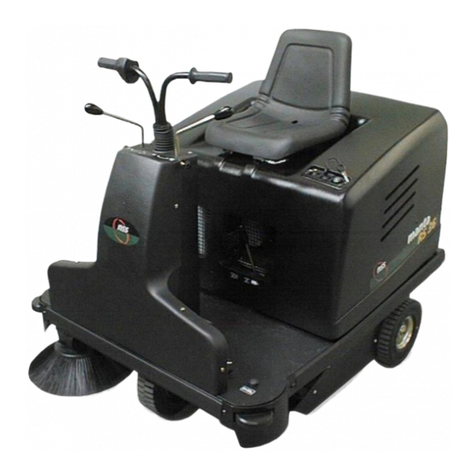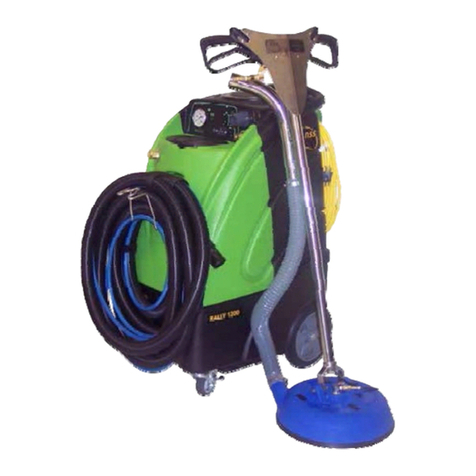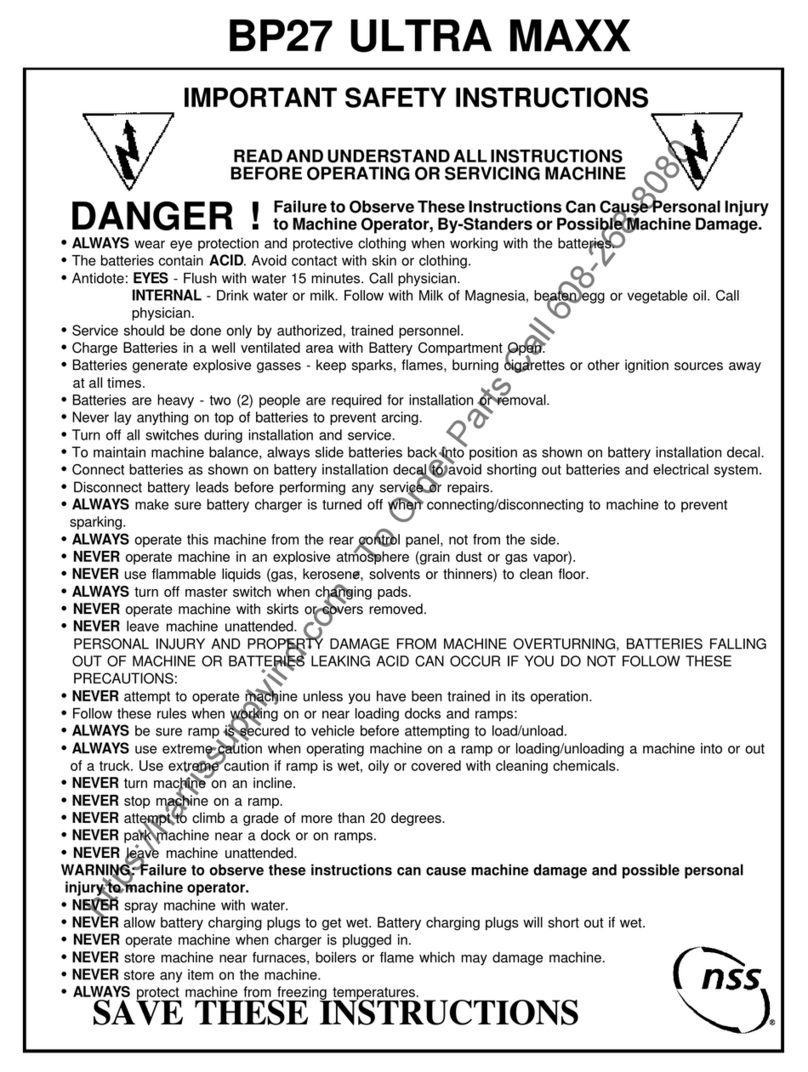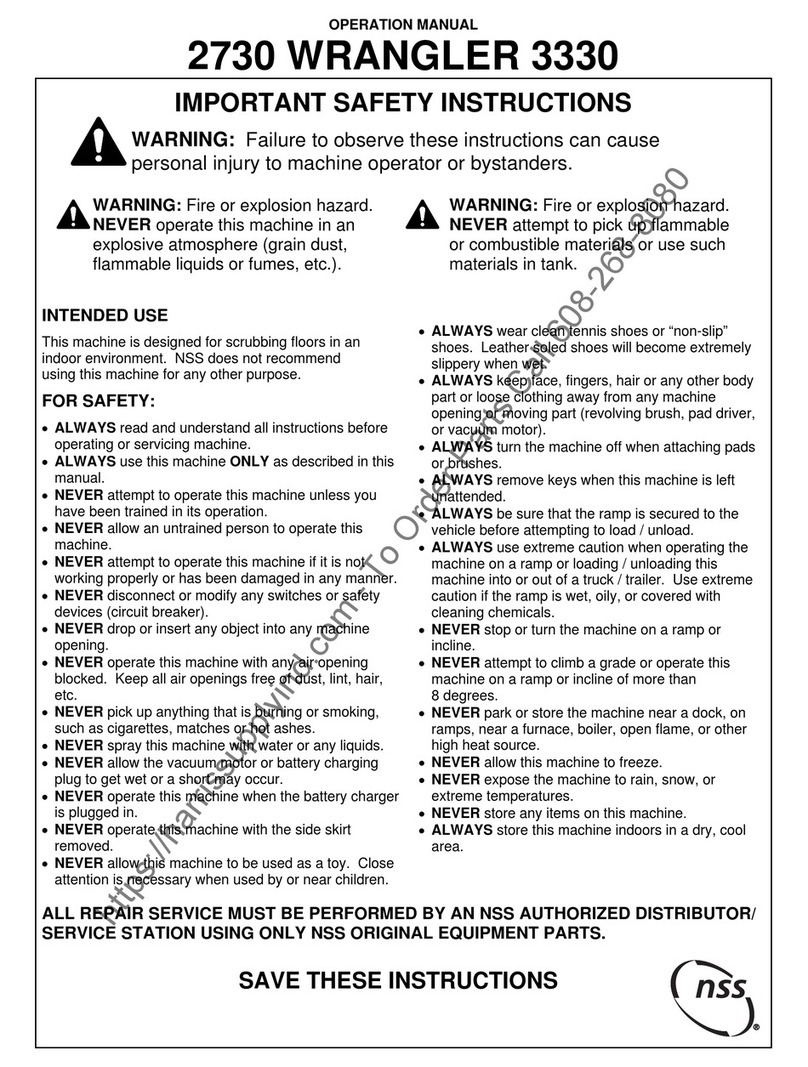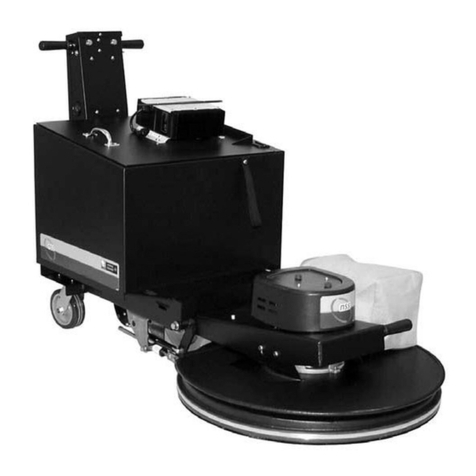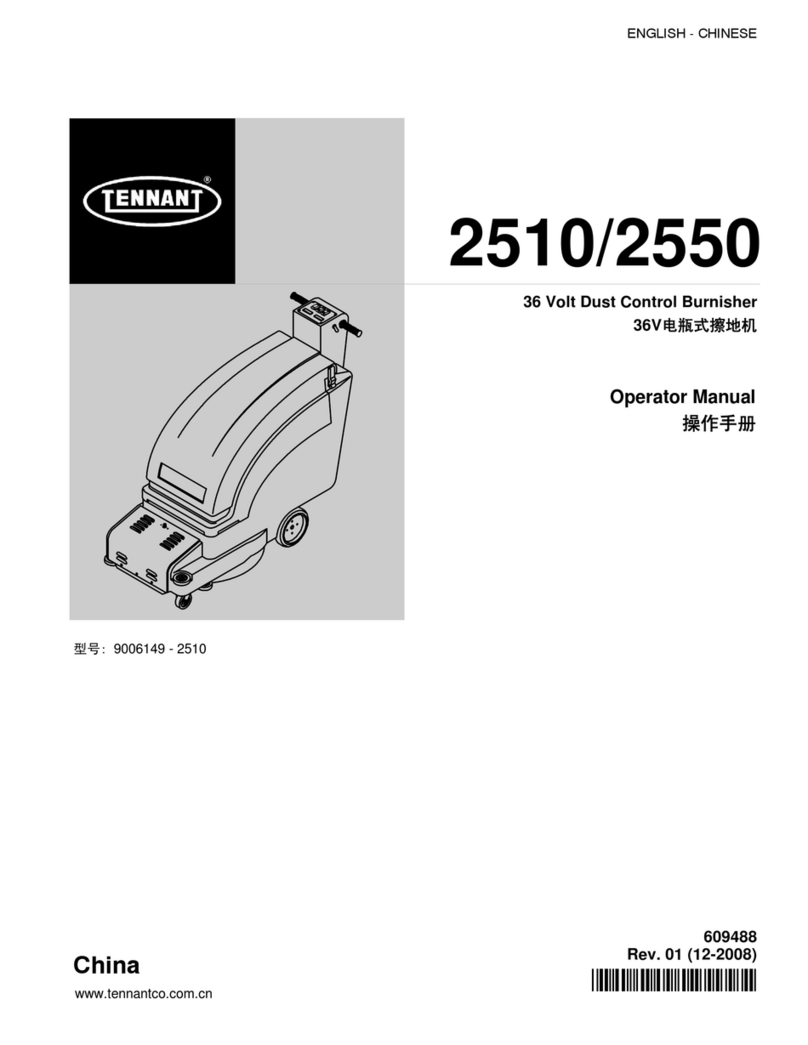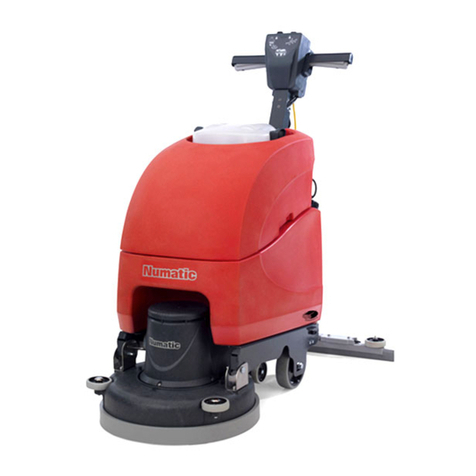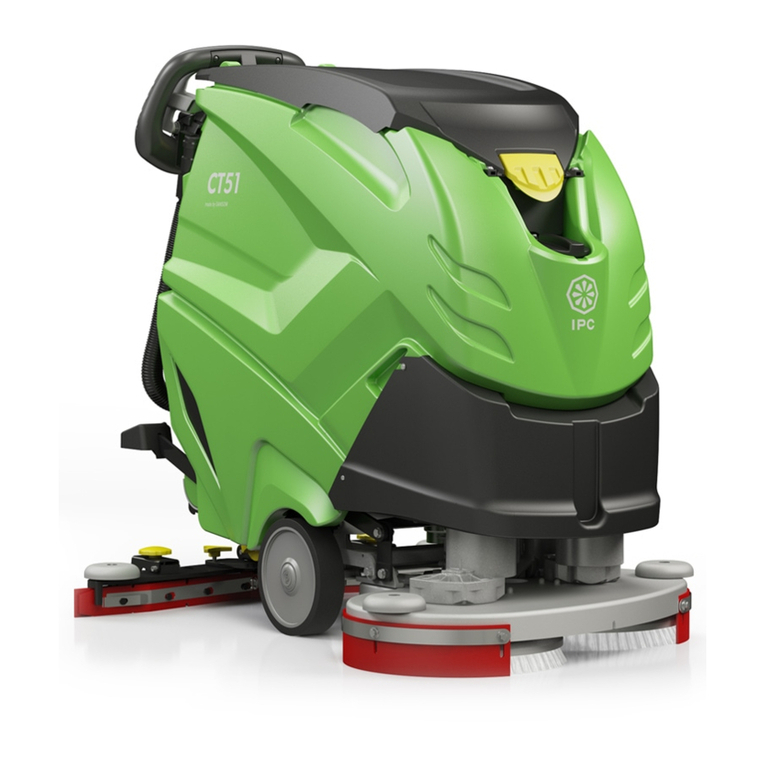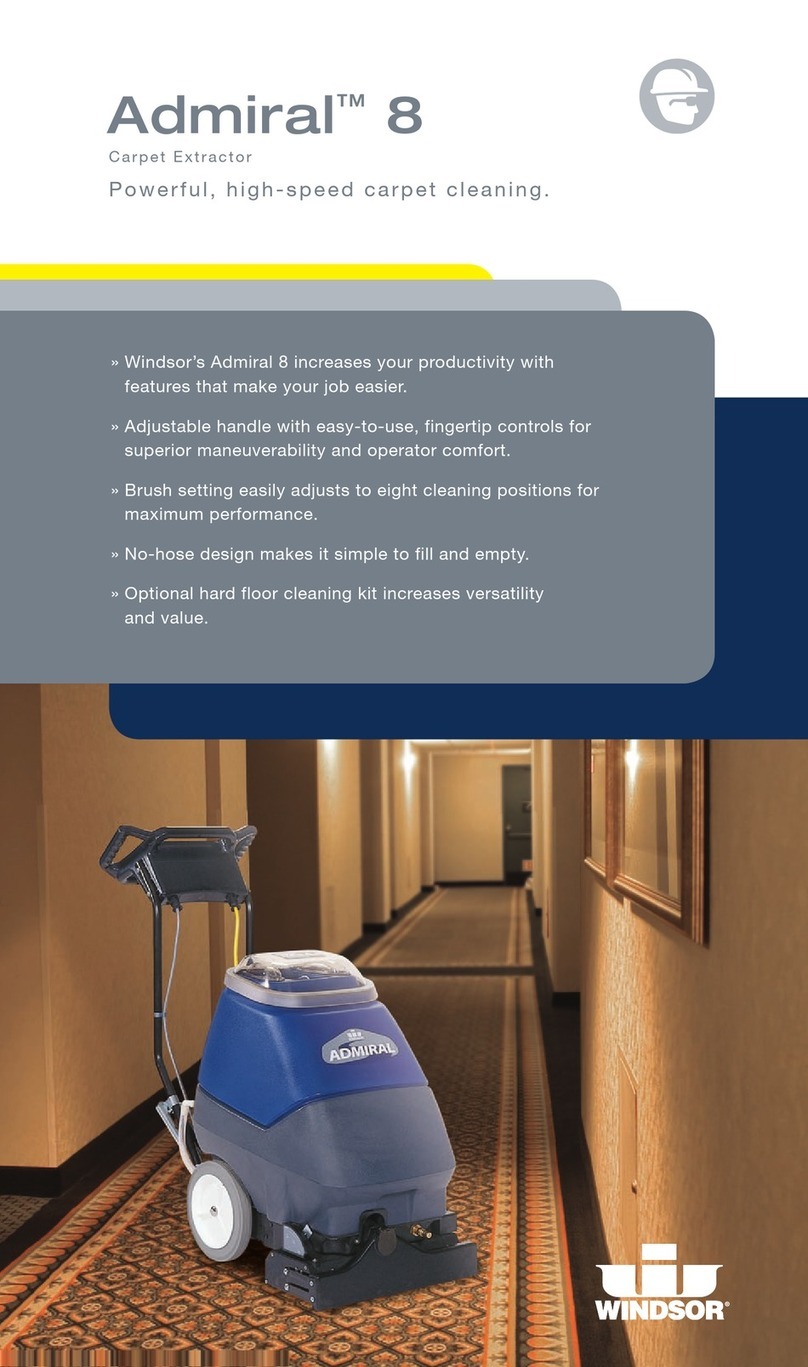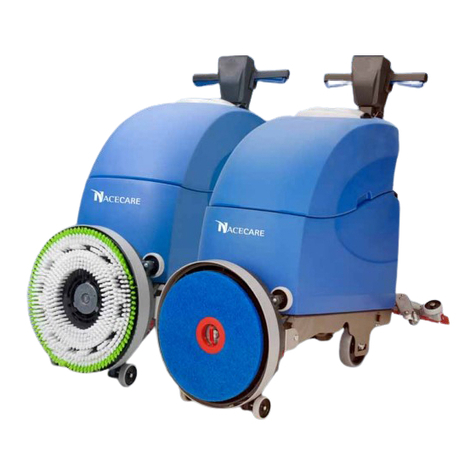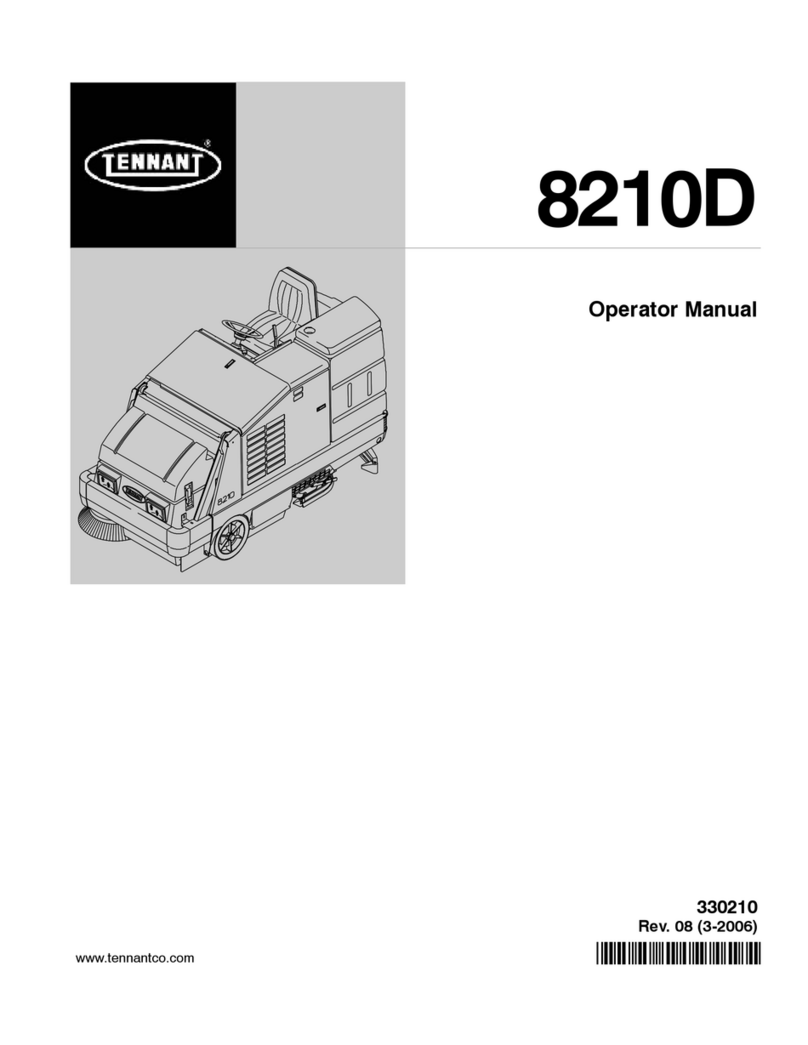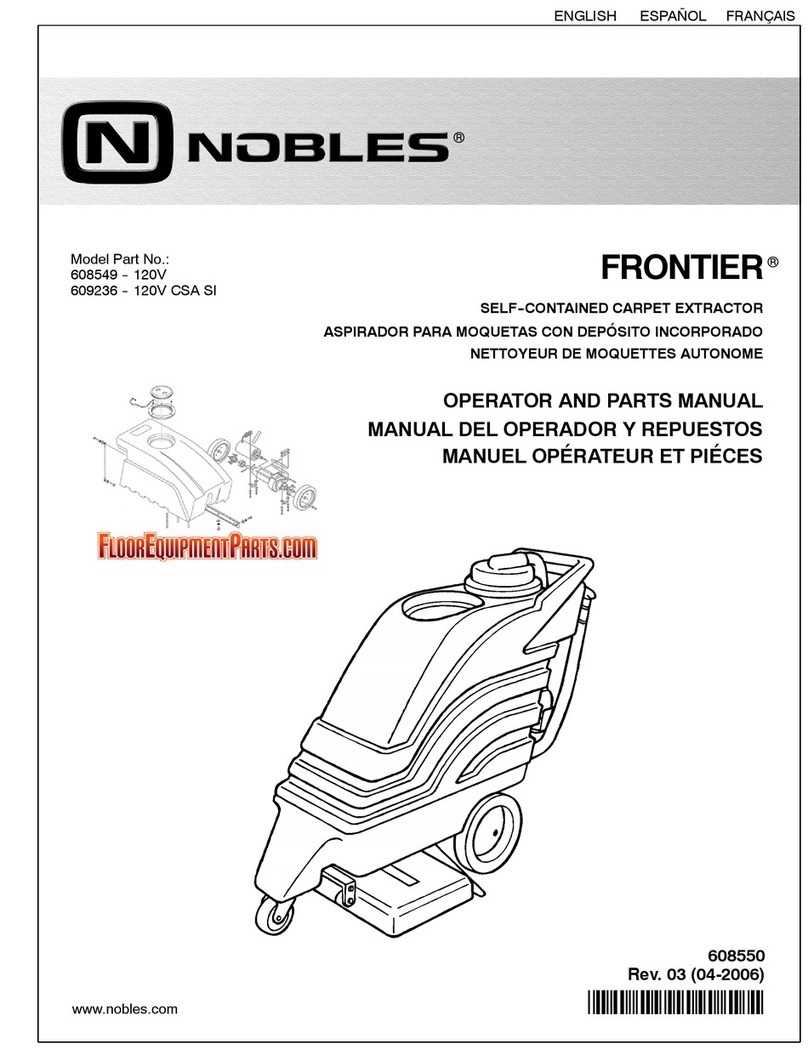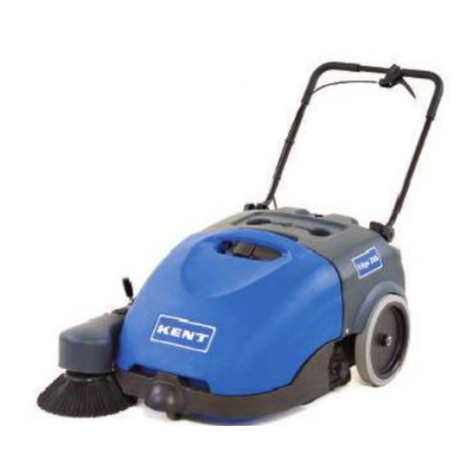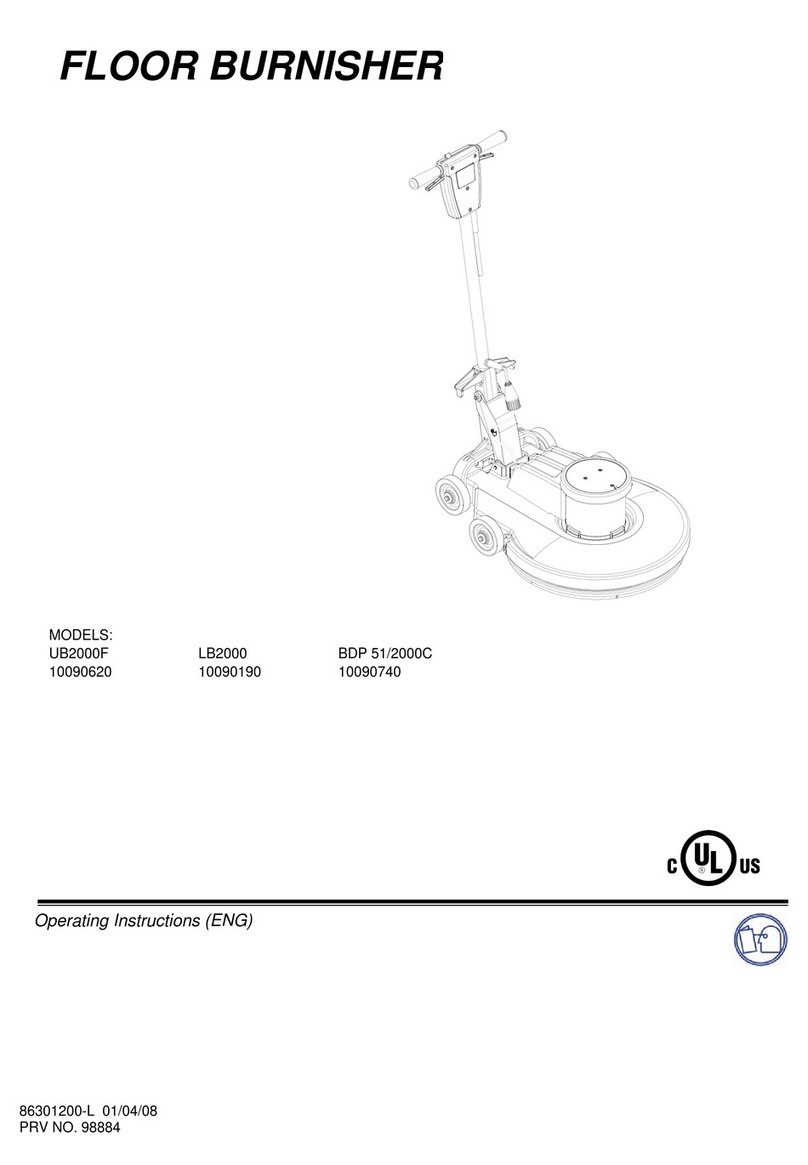
Battery charger
Operating instructions
1. Connect charger power cord to a properly grounded
outlet. When using an extension cord, avoid excessive
voltage drop and extended charge times by using a
grounded 3-wire 12 AWG cord for 50’ lengths or
shorter and 10AWG for greater than 50’ lengths.
2. If a minimum battery voltage is not detected, a trickle
current will be applied until a minimum voltage is
reached.
3. Once a minimum battery voltage is detected, the
charger will enter the bulk charging constant-current
stage. The current bar graph will indicate the current to
the battery as the charger moves through its charge
profile. The length of charge time will vary by how
large and how depleted the battery pack is.
4. When the yellow 80% LED is lit, the charger has
completed the bulk stage of the charge and the battery
is at approximately 80% of charge. The charging could
be terminated at this point if the machine requires
immediate usage, however, it is highly recommended
to wait until the green 100% charge LED illuminates to
ensure maximum battery capacity and battery life.
5. When the green 100% LED is continuously on, the
batteries are completely charged. The charger may
now be unplugged from AC power (always pull on
plug and not cord to reduce risk of damage to the
cord). If left plugged in, the charger will automatically
restart a complete charge cycle if the battery pack
voltage drops on average below 2.1 volts-per-cell or
30 days has elapsed.
6. If a fault occurred anytime during charging, the red
FAULT LED will flash with a code corresponding to
the error. To indicate which error, the FAULT LED
will flash a number of times at a rate of two times per
second, pause 0.5 seconds, then repeat.
[1 FLASH] Battery Voltage High: auto-recover
[2 FLASH] Battery Voltage Low: auto-recover
[3 FLASH] Charge Timeout: the charge did not
complete in the allowed time. This may indicate a
problem with the battery pack (voltage not attaining
the required level), or that the charger output was
reduced due to high ambient temperatures.
[4 FLASH] Check Battery: the battery pack could
not be trickle charged up to the minimum level
required for the charge to be started. This may
indicate that one or more cells in the battery pack
are shorted or damaged.
[5 FLASH] Over-Temperature: auto-recover.
Charger has shutdown due to high internal
temperature. Charger will restart and charge to
completion if temperature comes within accepted
limits, but the fault LED indication will remain until
the charger has been reset (AC removed).
[6 FLASH] QuiQ Fault: an internal fault has been
detected. If Fault 6 is again displayed after
interrupting AC power for at least 10 seconds, the
charger must be brought to a qualified service depot.
Maintenance Instructions
1. For flooded lead-acid batteries, regularly check
water levels of each battery cell after charging and
add water as required to level specified by battery
manufacturer. Follow the safety instructions
recommended by the battery manufacturer.
2. Make sure charger connections to battery
terminals are tight and clean.
3. Do not expose charger to oil or to direct heavy
water spraying when cleaning machine.
DC Battery Connection Procedure:
1. The green wire outputs a battery voltage when
the charger is not plugged in to AC to provide an
Interlock function.
2. Securely fasten the black ring terminal from the
charger to the negative terminal ("-", "NEG",
NEGATIVE") of the battery pack.
3. Select Charge Algorithm if battery type is other
than factory default.
Check / Change Charging Algorithm:
The charger comes pre-loaded with nine algorithms
for Lead Acid batteries as detailed in Table 1. Each
time AC power is applied with the battery pack NOT
connected, the charger enters an algorithm
select/display mode for approximately 11 seconds -
this is the only time the algorithm can be changed. In
this mode, the present algorithm is displayed on the
LED bar graph or 80% LED as shown in Table 1.
If the algorithm # is from one to six, it will be
displayed on the bar graph with the lowest LED
indicating that Algorithm 1 is selected; the second
lowest LED indicates that Algorithm 2 is selected, etc.
For all algorithm #’s, the algorithm number is also
indicated on the 80% LED by the number of blinks
separated by a pause. ** Note- algorithms 7-9 are
indicated only with the 80% LED indication - no bar
graph indication is given.
Check or change the charging algorithm:
a. Disconnect the positive connector from battery
pack. Apply AC power and after an up/down flash
of the LEDs, the algorithm # will display for 11
seconds.
b. To change algorithm, touch connector during the
11-second display period to the battery pack’s
positive terminal for 3 seconds and then remove-
the algorithm # will advance after 3 seconds.
Repeat until desired algorithm # is displayed. A 30
second timeout is extended for every increment.
Incrementing beyond algorithm 9 moves back to
algorithm 1.
After desired algorithm is displayed, touch the
charger connector to the battery positive until the
output relay is heard to click (~10 seconds)-
algorithm is now in permanent memory.
c. Remove AC power from the charger and
reconnect the charger positive connector to the
battery pack. It is highly recommended to check a
newly changed algorithm by repeating the above
steps a) and c).
